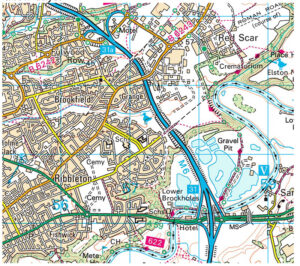This is Storelectric’s abridged response to the call for evidence on facilitating the deployment of large-scale and long-duration electricity storage.
This call seeks to identify the blockers to deploying large-scale long-duration electricity storage, and the best ways to remove them. In essence, substantial regulatory system changes are needed to achieve a Net Zero system at minimum cost and maximum reliability and resilience. Without such changes, heavier governmental intervention is required, for which the Renewable Energy Association proposed that an Income Floor or (second preference) Regulated Asset Base régime would be best; we joined others from throughout the industry to develop this REA report into longer-duration storage.
The Nature of the Energy Transition
In essence, the energy transition is the replacement of dispatchable, inertial generation with intermittent, asynchronous generation. Most actions to date have focused on the first half of that (replacing dispatchability with intermittency), a small minority on the second half (replacing inertial with asynchronous), and none at all on the whole lot. Almost all large-scale long-duration storage is inertial, and these support the whole lot – enabling the energy transition to be affordable, reliable and resilient. Storelectric’s technologies achieve this par excellence.
The Scale of the Need for Storage
The scale of the need for storage is grossly underestimated by grid, regulator and government alike, who instead depend excessively on:
- Imports during times of system stress, on which we cannot depend and, moreover, fail to recognise that Brexit gives our neighbouring grids a political imperative to cut us off during such times;
- Fossil fuelled generation with Carbon Capture and Storage (CCS) which is far too expensive, even in the rosiest of forecasts, and which also imposes a 30-40% inefficiency (here and here) on the power station as well as creating uninsurable risks for millions of years;
- Large-scale build-out of nuclear, when we’re still trying to build the Hinkley Point power station that was first cancelled in 1991 as being too expensive at £2bn; the current price is over £23bn and climbing;
- Excessive reliance on Vehicle-to-Grid storage, way beyond what is conceivably available;
- Using hydrogen power stations to support grid flexibility, which is far inferior to CAES (more costly and less efficient), though hydrogen CAES has good potential;
- A focus on “flexibility” without the concept of “duration” which has been a mantra in government, grid and regulatory circles ever since they started misunderstanding a 2012 Imperial College / Carbon Trust report that focused on flexibility but also analysed duration, identifying that the greatest value of storage was at 6 hours’ duration – they ignored that last part (p12 footnote “Resource adequacy requires several hours of storage duration, if peaking generation is to be displaced securely, based on the shape of the demand profile derived for 2030.”).
Black-outs will follow. In fact, there is a very easy and rigorous way of calculating the need for storage, which they don’t use.
Moreover, it is a commonplace among analysts that we would need three times the size of grid when renewably powered, which can be avoided if connecting renewables through large-scale long-duration inertial storage, saving billions in grid costs.
Problems with Dispatch Models
All the forecasting of grid requirements are based on “dispatch models” of the grid, in which the cheapest plants that can address the need at any given time are used to do so, regardless of the needs at other times. While being the most accurate technique for the short term (maybe up to 5 years’ time), there are many problems that arise from dispatch models beyond those timescales. For example,
- They depend on increasingly heroic (hence increasingly error-prone) assumptions about which technologies are available on the grid, their capabilities and capital, operational and marginal costs.
- They consider each need in isolation rather than all needs together; while one solution may be cheaper for a need A and a second for need B, it may be a third for the combination of needs A-C and more.
As a consequence, such methods lead to over-build of frequently-used capacity, which cannibalises the revenue stacks of less-used capacity that is needed to keep the lights on during less-frequent weather patterns, grid faults, generator failures or other circumstances. This in turn means that the less-used services (capabilities) have to be over-priced in order to fully amortise the plant that can deliver it. In effect, the system is paying twice for the cannibalised revenue stacks: once in the payments to the frequently-used services, and a second time in the increased cost of less-used services.
Problems with the Contracting Régime
Salami-slicing services in this way is an exceedingly costly problem not only in long-term demand planning but also in day-to-day contracting, and is one of the reasons (together with short-duration contracts, which deter investment) why in the years soon after privatising Britain’s electricity system, ministers enjoyed bragging that the country’s electricity was the second cheapest in Europe; now it’s among the most expensive. At privatisation the UK had one of the world’s most reliable and resilient electricity systems; in recent years our grid has been saturated, dependent on imports through interconnectors and subject to black-outs and numerous other grid challenges (e.g. dropping inertia, critically low fault margins in various measures), near misses and ever-escalating costs. There are cheaper, better, easier, more reliable and more resilient ways.
Short Duration Storage and Flexibility
Dispatch models lead to a claim that “around 30GW of short duration storage and flexible demand may be needed in 2050” (p9 and note 7). This will cannibalise the revenue streams needed for the longer-duration storage that is needed to keep the system going after sunset on a windless winter evening and during weather patterns that extend this for up to two weeks covering most of the continent and so killing interconnectors by eliminating any exportable surplus – the kalte Dunkelflaute, or cold dark doldrums, that figure greatly in the planning of the French and German grids but figure little in British planning. Such weather patterns are very frequent, if the geography is restricted to a few countries and their duration to a few days.
Technology Mix Needed
Enabling renewables to power grids is like the road system enabling the economy:
- If we only had motorways and main roads, we couldn’t get to our homes, offices and shops;
- If we only had small roads, we couldn’t get anywhere fast or far;
- If we go far on small roads, it’ll take forever to get there;
- If we go fast on small roads, we’ll crash.
Therefore we need the full range of technologies, using each for its strengths and not looking for “magic bullets” o4 applying one solution to all problems.
- DSR (Demand Side Response) should be used for short-duration spikes (upwards or downwards) due to either demand or system faults;
- Batteries are optimal below 1 hour; there isn’t enough lithium in the earth’s crust for more, doubling its duration increases its capital costs by 75-85%, its plant life is merely 8-10 years and its lifetime-average grid-to-grid efficiency is much lower than advertised.
- Longer-duration storage is far-and-away cheapest for the rest, especially since all its technologies (except flow batteries) are naturally inertial, which means that one inertial storage plant can deliver concurrently a range of services that would require a number of same-sized batteries and which would therefore do so much more cheaply provided that the contracts were not salami-sliced or short.
- The extent to which seasonal storage is required is moot: wind and solar have opposite monthly generation characteristics, so the right proportions of each (combined with sufficient longer-duration storage) will balance seasonal variability in demand; for year-on-year variability it may be cheaper to over-build generation.
Barriers to Deployment
All large-scale long-duration storage has high capital cost and long life; CAES and pumped hydro have 40-60-year plant lives. Most such technologies are new and hard, expensive and inefficient to deploy small; for example, we have been told (without being able to evidence it) that the 350kW, 2.5MWh prototype LAES cost millions (of which £1.1m grant) and was ~9% efficient terminal-to-terminal (less efficient grid-to-grid). Few investors are prepared to invest such sums in a plant that yields no returns and, given that inertial plants’ efficiencies all tail off rapidly with decreasing size, building small and inefficient ones doesn’t persuade investors that large ones will be commercially efficient, thereby requiring an ever-increasing cascade of public funding to get it to suitable scale. However, some technologies such as Storelectric’s CAES are so well demonstrably by digital modelling that much smaller amounts of support (given the right contracts and regulatory system, no cash at all) are needed, to build a first plant at commercial scale.
The barriers are, instead, referred to above. These include:
- Salami-sliced contracts;
- Short-duration contracts;
- Inability to share grid investment avoidance benefits (subject to a current proposal to National Grid, which needs support to evaluate and make recommendations across its System Operator, Network Operator and regulatory issues);
- Short lead times from letting contracts to requiring delivery;
- Cannibalisation of revenue stack (c.f. salami slicing);
- Mixed signals from grid, regulator and government.
Range of Services
The range of services that large-scale and longer-duration energy storage (LLES) (especially if inertial) can provide, many of them concurrently by each plant, is much broader than the ministry envisages, including:
- Distribution grid services
- Bilateral import contracts
- Bilateral export contracts
- Other grid services
- Imbalance pricing, hedging
- Congestion reduction
- Grid reinforcement avoidance
- Black start
- Synergies with renewables
- Stability services (based on real inertia)
- Voltage / frequency control / regulation
- Reactive power / load
- Ancillary services (based on speed of response)
- Balancing services
- Arbitrage
Building an Industry
One aspect not mentioned in the paper is building British industry, which is the explicit objective of the government including the formerly BIS part of BEIS.
There is increasing focus on large-scale long-duration energy storage around the world. No country has yet solved the challenge of incentivising it, but may are investing in it. If the UK were to build first-of-a-kind plants and provide a regulatory régime that incentivises roll-out deployment, not only would Britain lead the world in delivering the energy transition (c.f. Net Zero and COP26 targets), but also we would ensure that British-developed technologies are at the forefront of doing so. These are very exportable, creating large numbers of high value jobs and businesses.
A Floor Mechanism for Storage
This paper focuses very pleasingly on developing a mechanism for incentivising storage, repeatedly asking about a cap-and-floor mechanism but explicitly discussing floor-only and floor-with-soft-cap arrangements. The Renewable Energy Association’s report goes into the mechanisms in detail, and we agree with their recommendations, of which this is a highly abridged summary:
-
- A floor without a cap is the preferred mechanism (please note that in meetings with BEIS and Ofgem, the government economists present agreed with all these):
- The floor is not a market distortion, but instead removes a market distortion to enable the market to operate freely:
- Without a floor, salami-sliced and short-duration contracts mean that each bid must be over-amortised lest other bids in the revenue stack (either now or at a future renewal date) are lost, reducing the number of revenue streams over which the revenues can be spread,
- With a floor, that amortisation is covered, so the operator can bid true market rates for each revenue stream, thereby reducing total system costs, making bids from broadly flexible and longer-lived plants more competitive which in turn reduces the likelihood of ever calling upon the floor mechanism;
- Caps mean that little or no money is returned to the grid/consumer as there is no incentive whatsoever for operators to enhance earnings above the cap;
- Market signals exist to signal market needs; a cap negates the signal above an arbitrary point, ensuring that operators stop even attempting to improve their addressing of market needs above that point;
- Caps limit the potential up-side returns to investors, who respond by requiring higher minimum returns and so by raising the floor.
- The floor is not a market distortion, but instead removes a market distortion to enable the market to operate freely:
- Second choice would be a floor with a “soft cap”, i.e. the variant described whereby a proportion of the revenues above the cap are retained (e.g. ⅔) and a proportion returned to the grid/consumer (e.g. ⅓):
- Incentives to operators would be reduced, but since their costs are covered, the reduction is not critical provided the retained proportion is sufficient;
- Because operators are incentivised to optimise their plant’s trading beyond the soft cap,
- Market signals continue to be responded to, and
- More money is actually returned to consumers/grid.
- Third choice would be a cap and floor as per interconnectors, noting that a hard cap means that the floor will have to increase to compensate (see above).
- Fourth is a Regulated Asset Base which would operate similarly in effect to a hard cap and floor.
- These are greatly preferable to both CfDs and a reformed Capacity Market which are both designed for trading energy, whereas the benefit of storage is the value-added services (balancing, ancillary, stability etc.) rather than the energy.
- A floor without a cap is the preferred mechanism (please note that in meetings with BEIS and Ofgem, the government economists present agreed with all these):
A floor mechanism:
-
- Counteracts existing market distortions in favour of short-duration flexibility, thereby reducing the systematic over-build that the current system encourages, and reducing the cannibalisation of revenue streams that will result in substantial price increases in the revenue streams that short-duration flexibility cannot deliver;
- Makes markets work much more smoothly and on a more-level playing-field, where long- and short-duration flexibility can compete (e.g. secondary FR, Fast Reserve) by eliminating the market distortions described fully in the documents Revenue Stacking and Salami Slicing, and Issues with Ever-Shortening Contract Durations;
- Benefits the introduction of nascent technologies, by:
- Eliminating commercial and regulatory risk, so investors can focus on technical risk, and
- Being able to be “stacked” with aid given by other mechanisms (such as InnovateUK), which in turn reduces the amount of such other aid that is needed.



